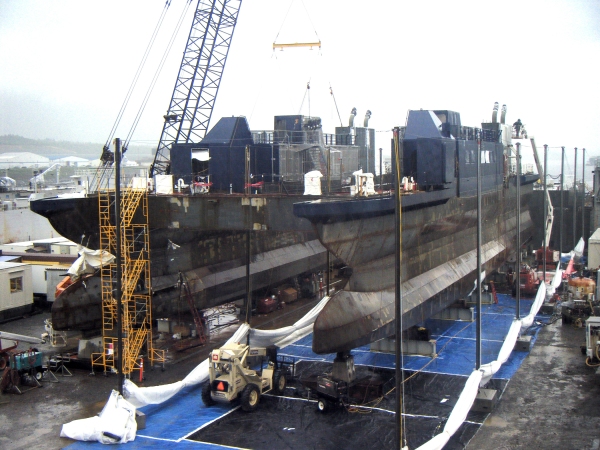HMAS Sydney inquiry blames captain for worst naval disaster

HMAS Sydney. Photo: Reuters
Brendan Nicholson
August 12, 2009 - 1:10PM Nearly 70 years after the sinking of the pride of the Australian Navy, HMAS Sydney, by the German raider Kormoran, an inquiry has blamed the Australian warship's captain for its loss with all 645 crew.
HMAS Sydney vanished on November 19, 1941, 112 nautical miles off the Western Australian coast after a brutal battle with the raider, which was disguised as a Dutch merchant ship.
The inquiry was headed by former judge Terence Cole, who said Sydney's commander Captain Joseph Burnett inexplicably brought his ship to within 1000 metres of the Kormoran, which in naval gunnery terms was "point blank range".
The Germans caught the Australian crew completely by surprise and Mr Cole said it was likely that within minutes, 70 per cent of the Australian sailors and airmen were dead.
He said the remaining crew, many wounded or suffering from inhalation of smoke and toxic fumes inside the blazing warship, would have had little chance of survival when the Sydney sank very suddenly.
Mr Cole said he had not made any formal finding of negligence against Captain Burnett.
"The commanding officer of HMAS Sydney II was not expecting to encounter any merchant ship in the location where he encountered Kormoran," Mr Cole said.
"That knowledge together with his knowledge of the possible presence of a German raider, should have caused the sighted vessel to be treated as suspicious."
Mr Cole produced a hefty three-volume report on the Sydney's loss, one volume of which deals with conspiracy theories that have emerged over the years to explain how a raider was able to overwhelm a large warship and how there were no survivors from the Sydney.
He said he was satisfied that all of these theories - including that a foreign submarine may have been involved, or that the Germans murdered Australian survivors - were untrue.
"Each of the many frauds, theories and speculations reported to the inquiry were thoroughly investigated and none were found to have any substance whatsoever," Mr Cole said.
He also said Captain Burnett had been sent, just days before he encountered the Kormoran, detailed lists of all of the merchant ships around the Australian coast and he should have realised quickly that the Kormoran's claim to be a Dutch vessel was false.
Australian Defence Force chief Angus Houston welcomed the report, saying it answered many questions that had haunted the families of the brave sailors and airmen who never came home.
"For a long time, our nation has struggled to understand how our greatest maritime disaster occurred," Air Chief Marshal Houston said.
The inquiry was launched in March 2008 and investigators received hundreds of submissions and travelled to Europe to interview German survivors.










